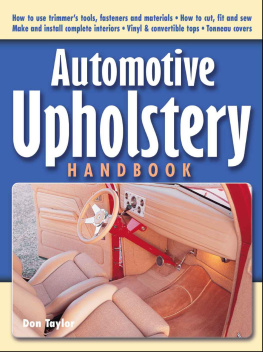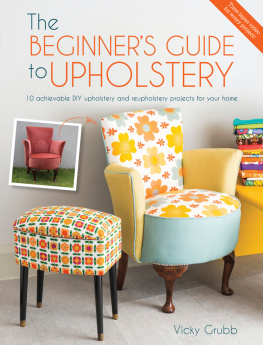Cherry Dobson - The Upholstery Bible
Here you can read online Cherry Dobson - The Upholstery Bible full text of the book (entire story) in english for free. Download pdf and epub, get meaning, cover and reviews about this ebook. publisher: David & Charles, genre: Home and family. Description of the work, (preface) as well as reviews are available. Best literature library LitArk.com created for fans of good reading and offers a wide selection of genres:
Romance novel
Science fiction
Adventure
Detective
Science
History
Home and family
Prose
Art
Politics
Computer
Non-fiction
Religion
Business
Children
Humor
Choose a favorite category and find really read worthwhile books. Enjoy immersion in the world of imagination, feel the emotions of the characters or learn something new for yourself, make an fascinating discovery.

- Book:The Upholstery Bible
- Author:
- Publisher:David & Charles
- Genre:
- Rating:3 / 5
- Favourites:Add to favourites
- Your mark:
- 60
- 1
- 2
- 3
- 4
- 5
The Upholstery Bible: summary, description and annotation
We offer to read an annotation, description, summary or preface (depends on what the author of the book "The Upholstery Bible" wrote himself). If you haven't found the necessary information about the book — write in the comments, we will try to find it.
The Upholstery Bible — read online for free the complete book (whole text) full work
Below is the text of the book, divided by pages. System saving the place of the last page read, allows you to conveniently read the book "The Upholstery Bible" online for free, without having to search again every time where you left off. Put a bookmark, and you can go to the page where you finished reading at any time.
Font size:
Interval:
Bookmark:
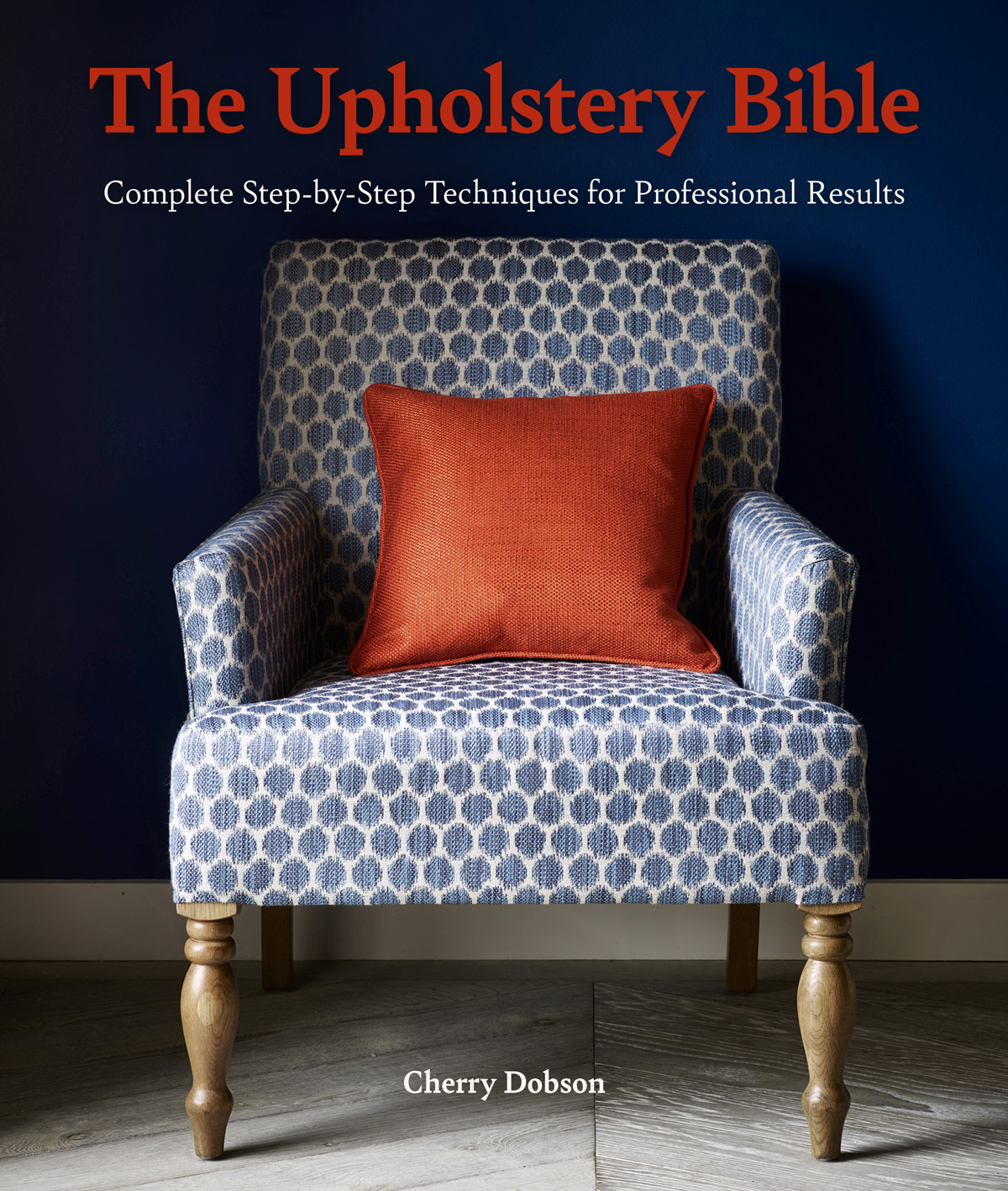

The Upholstery Bible
Complete Step-by-Step Techniques for Professional Results
Cherry Dobson

www.davidandcharles.com

Front cover:
Photograph courtesy of Jane Churchill fabrics and wallpapers
Photographs on
Photographs on .
Photograph on , kibri_ho/Shutterstock.com.
Other photographs and illustrations are the copyright of Quarto Publishing plc. While every effort has been made to credit contributors, Quarto would like to apologize should there have been any omissions or errors and would be pleased to make the appropriate correction for future editions of the book.
Quarto would also like to thank the following companies for supplying sample fabrics and tools:
- Osborne & Little (www.osborneandlittle.com)
- Nina Campbell (www.osborneandlittle.com)
- Laura Ashley (www.lauraashley.com)
- Glover Bros., Taunton
- The Millshop Online (www.the-millshop-online.co.uk)
US consultant
Patricia Gilkey, Second Chance Upholstery, a San Francisco Bay Area upholsterer for 20 years, vetted member and five-year Director of the Association of Master Upholsterers and Soft Furnishers, widely acknowledged as the trade association of the professionals.
DEDICATION
To the memory of my father Harry Cook, who endowed me with his practical skills, and my late husband Roger, whose spirit has been ever present over my shoulder during the preparation of this guide.
The restoration and reupholstery of furniture has recently been enjoying a revival. This new appreciation has been fuelled by an admiration of traditional quality, the wonderful variety of fabrics available and the desire of people of all ages and backgrounds to embark upon projects with pleasing and worthwhile objectives. This guide will help to lead you through the basics of the craft, but also introduce you to some of my personal tips, which come from many years experience of tackling the knotty problems that frequently occur in upholstery. The craft is labour intensive and requires patience and perseverance but the rewards are wonderful. I hope that this book will be a useful addition to your bookshelf and will encourage you, so that you will both enjoy and take pride in the results.
To my mother for her love and patience when I have been engrossed in the book. To my many friends who have been so supportive, especially to Peter for his diligent proof reading, and to Pat for providing the food. Not forgetting the students I have met over the past 25 years. Without them and their chairs, I would never have learned so much. Hopefully this book will be a reminder to all of them of the techniques I have taught them.

This book is a complete course in upholstering furniture, including tooling up, selecting stuffings and outer textiles, techniques and cutting plans.
Starting with the basic tools, this section gives an overview of the equipment youll need, including springs, stuffings and textiles.
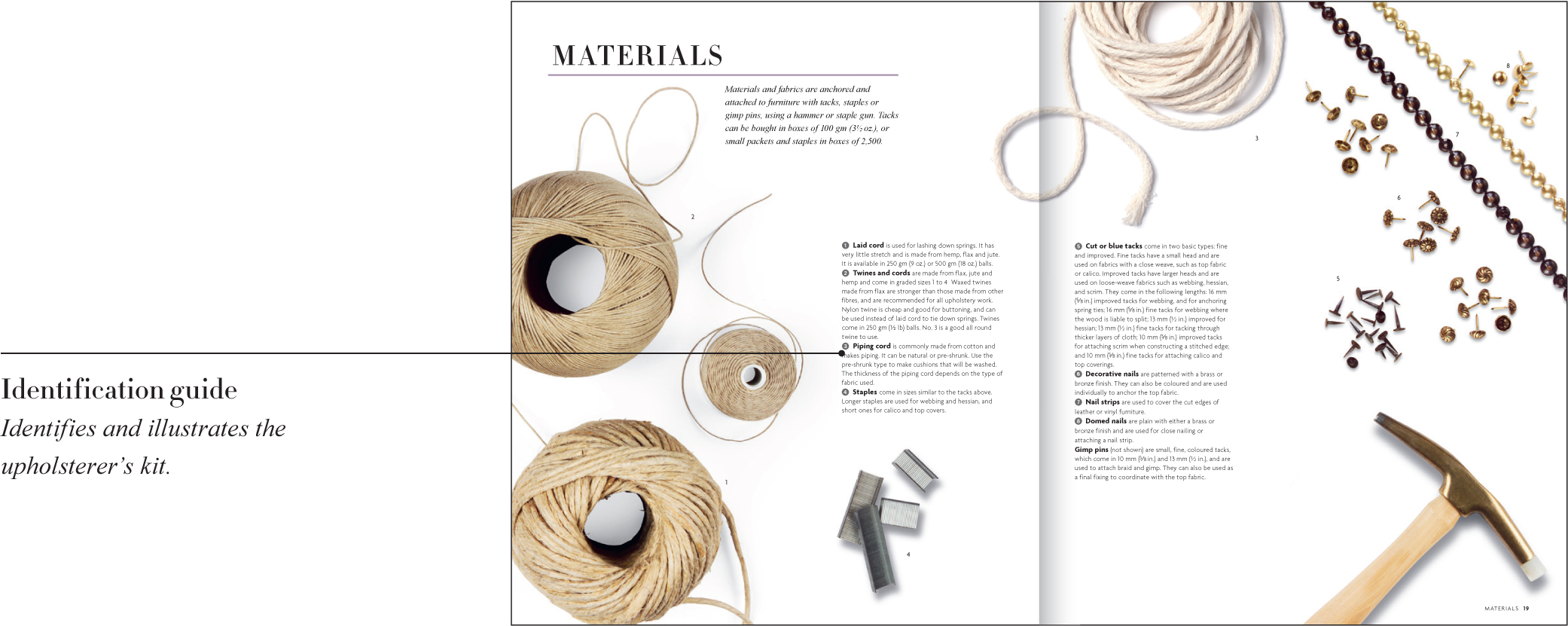
Most of the techniques are demonstrated on chairs but the same principles can be applied to larger pieces of furniture in need of upholstery.
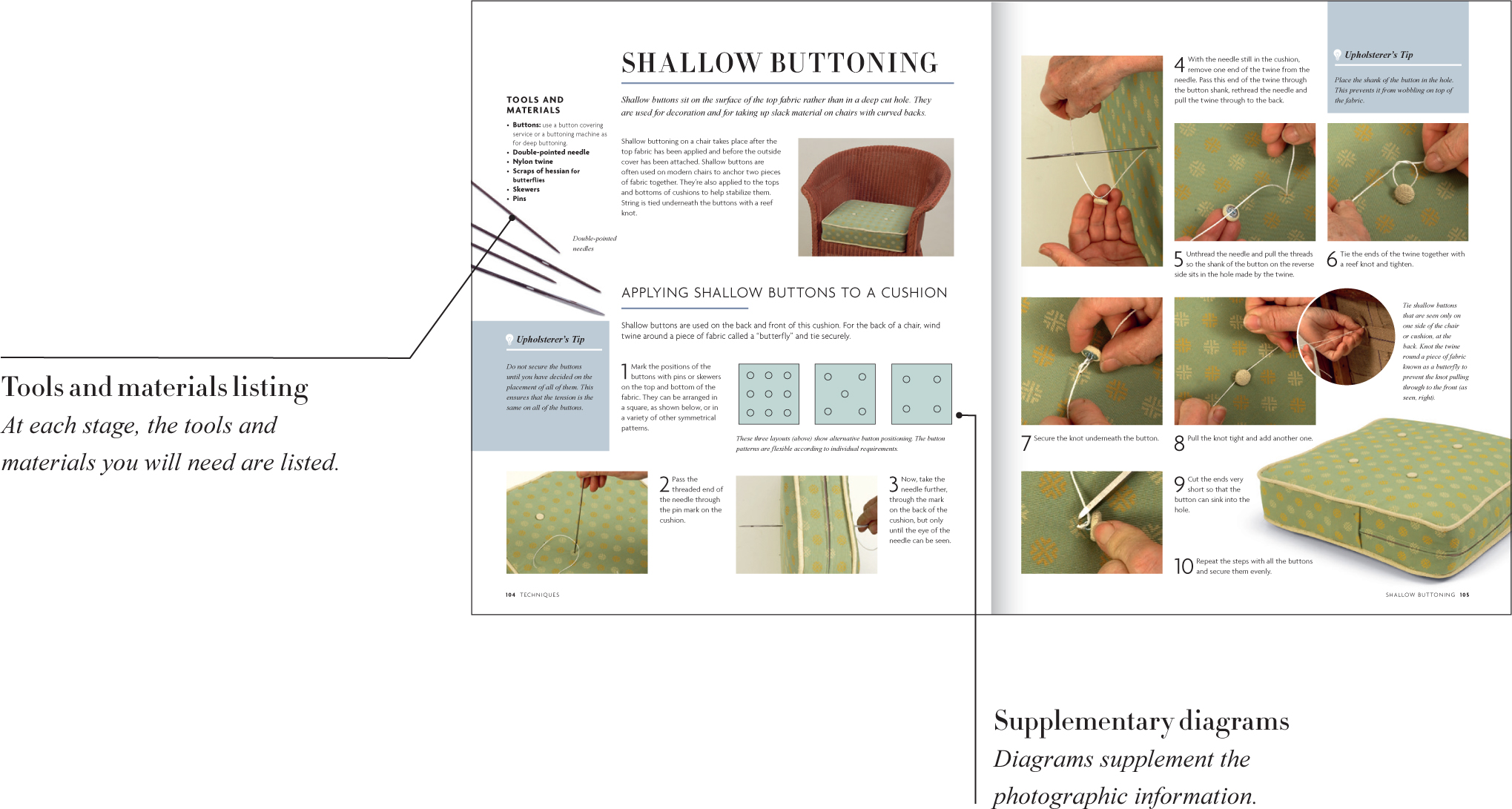
This part identifies what lies beneath the skin of different types of furniture. No two pieces of furniture are identical: use this section as a guide to plan how to measure your project and how to cut fabric to minimize the quantity you have to buy. In many cases, cutting plans are provided for both plain and patterned fabric.

UPHOLSTERERS ORDER OF WORK
Find a piece of furniture to upholster. If you are a beginner choose something simple, such as a chair with a drop-in seat.
Strip the furniture (), making a note of the materials that have been used and how they were applied.
Apply the webbing () to create a platform for the stuffings.
Check the condition of the springs and either reuse or replace them ().
Add hessian to cover the springs ().
Apply the first layer of stuffing ().
Apply a stitched edge for shape retention ().
Apply a second stuffing of hair ().
Measure and cut the new coverings and apply ().
Add buttoning if required ().
Add the finishing touches, such as piping, braid, gimp and studs ().
Finish the piece with lining underneath the chair to conceal the workings of the upholstery ().
Traditional methods of upholstery are still used today despite the invention of synthetic fibres. Upholstery is a skilled craft requiring judgement and dexterity and every piece of furniture needs to be approached differently. The stuffing is built up gradually following the contours of the frame and the upholsterer has to judge whether the shape and height look and feel right.

An ornate French armchair, from the reign of Louis XVI. With upholstered seat, back and arm rests. This is the work of a famous Paris-based master upholsterer called Georges Jacob (17391814).
Early upholstery was rudimentary. Girthweb the type of webbing used for making saddle girths was woven across the frame and tacked at the edges. In France it was close-woven, but elsewhere there were large gaps between the girths. The webbing was then covered with a piece of hessian or coarse sackcloth and some form of padding was piled on, either feathers, wool, animal hair or vegetable matter such as straw, chaff, rushes or dried grasses and leaves. Occasionally the padding was roughly secured with bridle ties before the top cover was nailed on. The backs of chairs were usually stuffed with washed and curled real hair, which was more expensive, stitched onto a linen or canvas backing. After about 1660 real hair was used to a much greater extent and the front and sometimes the sides of the seats, which received the greatest wear, were strengthened with an extra band of stuffing sewn into a roll of hessian or canvas. Additional layers of fabric, usually wadding or linen, were placed between the real hair and the top cover to prevent the hair from working its way through the fine fabric above. Some chairs had loose cushions filled with down or feathers.
Font size:
Interval:
Bookmark:
Similar books «The Upholstery Bible»
Look at similar books to The Upholstery Bible. We have selected literature similar in name and meaning in the hope of providing readers with more options to find new, interesting, not yet read works.
Discussion, reviews of the book The Upholstery Bible and just readers' own opinions. Leave your comments, write what you think about the work, its meaning or the main characters. Specify what exactly you liked and what you didn't like, and why you think so.










